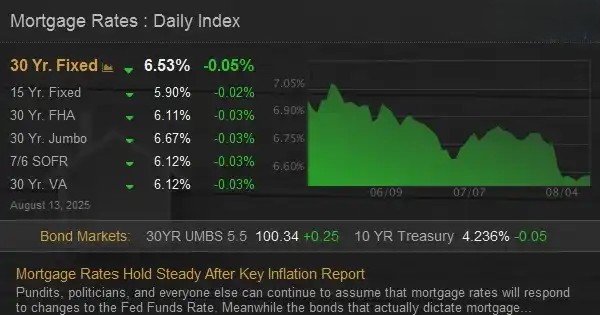A new report from the Mortgage Bankers Association shows that rising interest rates are having a significant cooling effect on the housing market, as mortgage applications have fallen to their lowest level in over a year.
Table of Contents
The data provides clear evidence that the Federal Reserve’s aggressive rate-hiking cycle is successfully dampening demand in the interest-rate-sensitive real estate sector. For prospective homebuyers, higher borrowing costs are eroding affordability and pushing many to the sidelines.
This slowdown in mortgage demand is a key indicator of the health of the housing market, which has been a major contributor to economic growth. The report suggests that the red-hot market of the past few years is finally entering a period of moderation, which could have broader implications for the economy.
📉 The Numbers Behind the Slowdown
The report highlighted a sharp decline in both purchase and refinance applications. The MBA’s index of mortgage applications fell by 5.4% last week on a seasonally adjusted basis. This decline was driven by a significant drop in applications for home purchases, which are now down more than 20% compared to the same week last year.
The primary cause for this slowdown is the dramatic increase in mortgage rates:
- The average contract interest rate for a 30-year fixed-rate mortgage has climbed significantly in recent months, reaching levels not seen in over a decade.
- For the average homebuyer, this translates to a monthly mortgage payment that is hundreds of dollars higher than it was at the beginning of the year for the same priced home.
Refinance activity has also plummeted, as very few homeowners have an incentive to refinance when current rates are much higher than their existing mortgage rates.
🏠 What This Means for Homebuyers and Sellers
The current market environment presents a new set of challenges and opportunities for both buyers and sellers. The frantic bidding wars and rapid price appreciation of the last two years are beginning to fade.
For homebuyers, the biggest challenge is affordability. Higher rates mean less purchasing power, and many are finding they can no longer afford the homes they could have just a few months ago. However, the cooling demand also means less competition, giving buyers more time to make decisions and more negotiating power.
For sellers, the market is shifting. While prices have not yet fallen significantly on a national level, the pace of price growth has slowed dramatically. Sellers can no longer expect to receive multiple offers well above the asking price. They may need to be more realistic with their pricing and more patient in finding a buyer.
🔮 The Future of the Housing Market
Most economists expect the housing market to continue its cooling trend for the remainder of the year. The future direction of the market will depend heavily on the path of interest rates and the overall health of the economy. If the labor market remains strong, it could provide a floor for the housing market, preventing a major crash. However, if the economy slips into a recession, the housing market could face more significant headwinds. For now, the era of super-low mortgage rates is over, and the real estate market is adjusting to a new normal.
More Topics
- Crude Oil Prices Rise on Supply Concerns
- Europe Proposes New AI Regulations – What You Need to Know
- The US Under Siege by Extreme Weather: Fires, Floods, and Heat Waves
- US Military Families on the Brink of Hunger
- Is Sydney Sweeney’s Jeans Ad a Form of Nazi Propaganda?
- How Birmingham Honored Ozzy Osbourne

